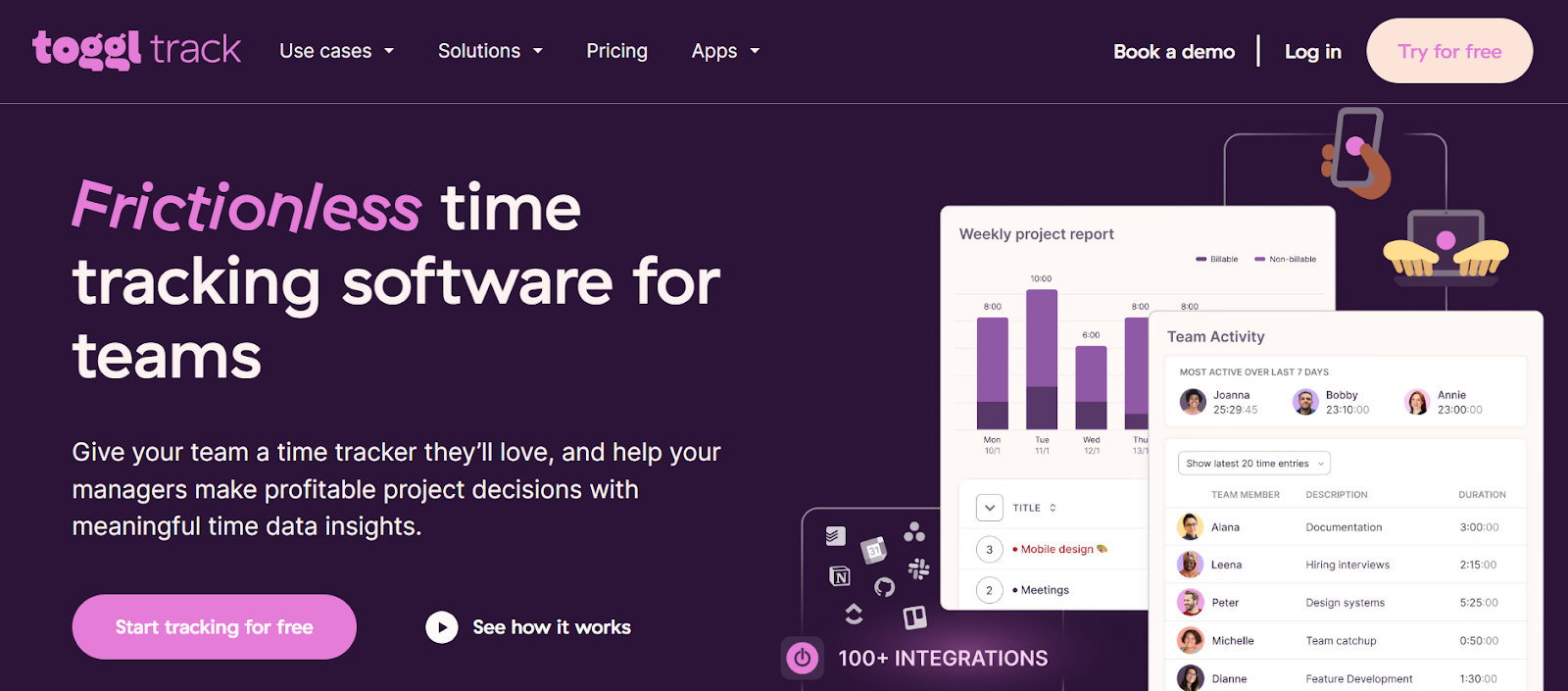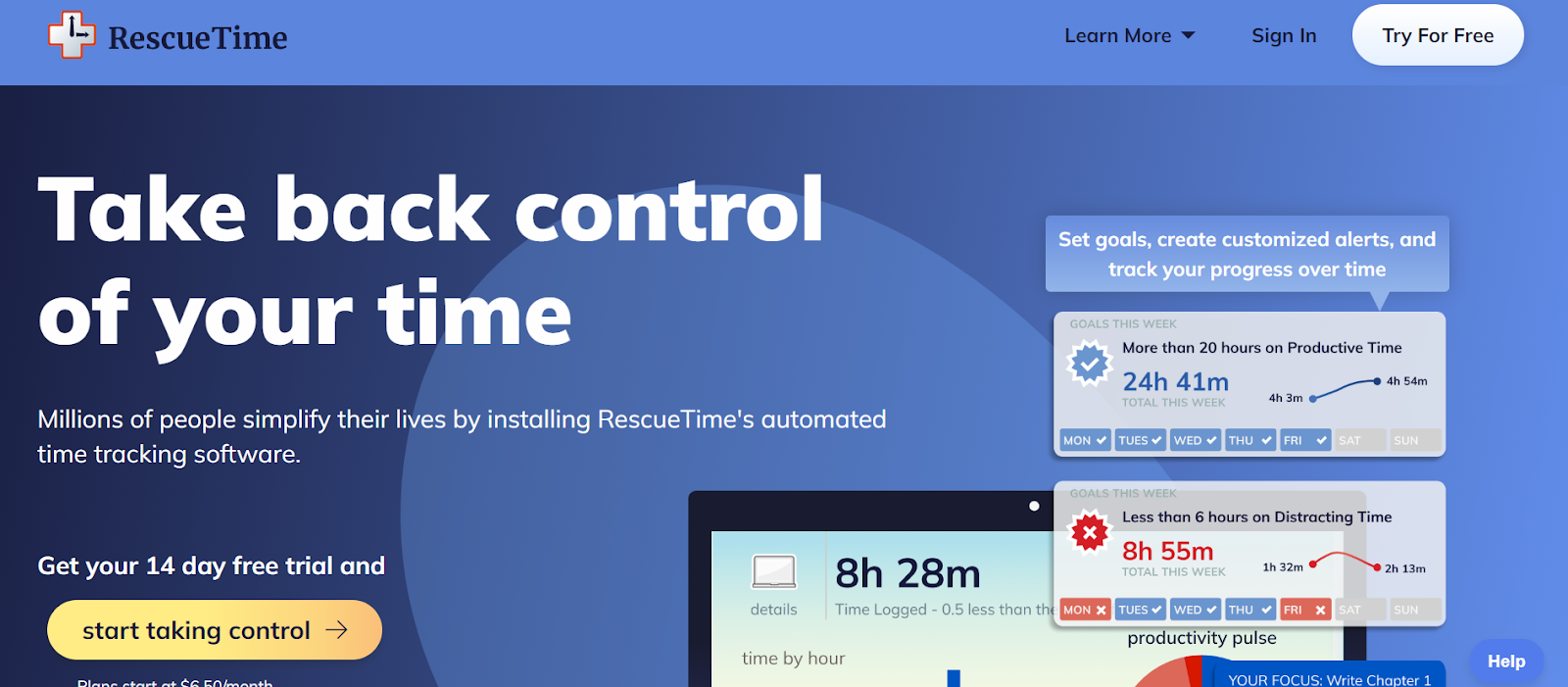More than tracking how much time you spend on one task or activity, time audits work wonders for getting the most out of your time in the most efficient way possible. Knowing how you spend your time means you can pinpoint high-priority activities and eliminate or decrease potential time wasters. You can also better allocate your time and work towards a good setup for work-life balance. But how exactly can time audits benefit agencies? Find out in this article.
Understanding the concept of a time audit
Before you can effectively manage your time, you first need to do a time audit. This involves identifying where, how, and on what activities your hours are going towards. This requires monitoring all activities on your daily schedule over a period of time.
Putting all this data together, you’ll get to see some trends which will then help you understand your work-life balance, highlight missed deadlines, and prioritize future tasks. Additionally, time audits help you know how to allocate your time better so you improve your efficiency and achieve priority goals. This is why time audits can’t be missed in effective time management. It not only boosts efficiency but also directly impacts productivity.
What is a time audit?
A time audit is a technique used to specifically track time spent on various activities in a certain time period. People who use this often create charts to track activities and to showcase time trends helping them easily spot which tasks take up the most time or those that could be streamlined. This process allows for efficient adjustment and easy prioritization of key priority goals.
Why is a time audit important for agencies?
Even with teams and departments, handling multiple clients and various tasks can get to be a handful for agencies. With a time audit, agencies can get an accurate understanding of their team’s time allocation and help identify time wasters. From there, adjustments could be made to optimize productivity and ensure time is well spent on high-priority activities. This means more efficient work, well-distributed tasks, and, of course, happy clients.
Steps to conduct a time audit
Conducting a time audit doesn’t just mean listing down every task you do within the day and the minutes you spend on it beside it. That’s just one part of the equation. Here is the complete rundown of steps to conduct an effective time audit.
Step 1: Identify your goals
Before anything else, you have to understand what you want in regard to your workflow and time management to give your time audit direction. To ascertain these, consider your high-priority activities and what you deem as time wasters in your daily schedule. Make sure you know which is which so your time audit will have direction from the get-go.
Step 2: Tracking your time
Mastering time management means mastering where and how you spend your time. A simple way to see how you spend your time is by making a time audit chart. It helps identify patterns or time trends in your routine.
Seeing how you spend your day in plain view will help you focus on your goals, ensure your time is well-spent, and let you understand where to reallocate your minutes. Done properly, this will help reduce missed deadlines, boost efficiency, and enhance work-life balance. Also, it provides you with the material facts to set your priority goals and establish a more efficient daily schedule.
Step 3: Categorizing your activities
Categorizing your activities will help make it clearer to you which ones need your time the most. You can classify them into high-priority activities or time wasters. This will greatly aid in tracking activities, identifying time trends and ensuring priority goals are met within the appropriate time period. The benefit of this step in time tracking is that it leaves no room for assumptions, providing clarity for effective time management.
Step 4: Implementing changes
The use of a time tracking tool can help pinpoint time wasters and high-priority activities. From this data, you can now know what changes to implement in your schedule.
After you’ve categorized your activities, look into the high-priority activities and see how you can best finish them. Each person is different so everyone’s arrangement of these activities may be different. What’s important is knowing what activities need the most of your time and attention. This will also allow you to customize your schedule and allocate your energy efficiency so you’ll have less stress, missed deadlines, and time conflicts in your day.
Tools for effective time auditing
Tools like a time audit chart or software for time tracking can make time auditing easier. With these, you won’t have to waste more extra minutes tracking everything manually. Here are some of the best tools in the market currently.
Using Toggl for time tracking

Toggl is a great time-tracking tool as it can track activities intensely and give you a comprehensive layout of your day. With the data it provides, you can pinpoint and get rid of time wasters as well as make better-informed decisions on where to deploy your energy. Toggl also enables you to create an effective time audit chart to prioritize your goals and avoid missing any deadlines.
Harvest: A comprehensive time audit tool

Harvest was specifically designed to enhance time management and productivity. Users can use it to create a detailed daily schedule, identify time wasters, and monitor time trends to prevent missed deadlines. You can also generate time audit charts and gain a better grasp of your time distribution. Overall, this tool promotes efficient workflows and a great work-life balance.
RescueTime: For detailed time audit reports

If you need a detailed time audit, RescueTime is a great tool to use. It can provide elaborate reports with time trends over a specified period. This allows you to easily identify time wasters and re-allocate your time to activities that need it more.
By keeping track of all your activities, RescueTime helps maintain a productive daily schedule and minimizes missed deadlines. This not only helps you reduce wasted time but it also gives you a chance to better your work-life balance.
Common mistakes in time auditing and how to avoid them
Though it might seem simple on paper, time auditing has its fair share of complexities where people can fail. Instead of improving your time management and productivity, committing mistakes with your time audit can do just the opposite. To avoid these mistakes, it’s best to know about them first. Here are the most common ones.
Mistake 1: Not tracking all activities
Some activities might seem so insignificant that you don’t put them in your list, however, in time auditing, every activity of your day counts. Without tracking everything, it becomes nearly impossible to identify time wasters, tailor your daily schedule, or meet high-priority activities.
The point of a time audit is to analyze time trends in a specific period. This is what allows you to understand how to better allocate your time. Having missing blocks on your time list defeats this purpose and can lead to missed deadlines, disruption of work-life balance, or failure to attain priority goals.
Mistake 2: Not categorizing activities properly
Your daily schedule should reflect your priority goals, with most of your time spent on urgent and important tasks. But you can only do this if you clearly know what the urgent and priority tasks are. Miscategorizing your tasks decreases your productivity since you’re not spending your time on the things that matter most for the day.
Mistake 3: Ignoring small time wasters
When it comes to effective time management, you can’t ignore the small time wasters. These could be seemingly minor activities that, when accumulated over a longer time period, significantly affect your productivity. They can encroach on the time spent on high-priority activities and lead to missed deadlines.
Benefits of conducting a time audit for agencies
Conducting time audits presents tons of benefits for agencies. From putting more focus on high-priority activities to boosting productivity, it helps in more ways than one. The benefits it presents not only improve work-life balance but also drive the agency towards achieving priority goals.
Improved productivity
Improving productivity often starts with effective time management and to establish time management, you need a time audit. A methodical time audit chart can shed light on time trends and time wasters by breaking down your daily schedule.
Another factor in boosting productivity is prioritising your tasks according to business and personal goals. Dealing with high-priority activities instead of getting caught up in low-value tasks prevents missed deadlines and improves work-life balance. And time allocation is crucial in achieving these priority goals.
Better time management
Better time management helps agencies improve their employee productivity as well as their bottom line. Time audits can help agencies achieve that by allowing teams or employees to make an organized daily schedule from time audit charts. With all the needed data right in front of them, it becomes easier to handle time and energy.
Enhanced decision making
Enhanced decision-making is directly linked to effective time management and productivity. By using a time audit chart, employees can identify time wasters and high-priority activities allowing them to make better decisions on what to spend time on. It also allows them to better manage their time and improve their work-life balance.
Making time auditing a regular practice
Time is one of the most expensive commodities today and for good reason. In agencies, it’s also one of the most crucial driving factors of growth and success. To be able to manage it well, however, it must be dedicated to the right things properly and that’s where time audits are needed. Whether it’s simply to improve daily schedules or streamline a project timeline, it works wonders for time management and resource management.






